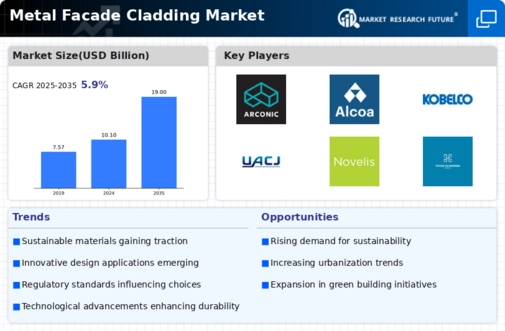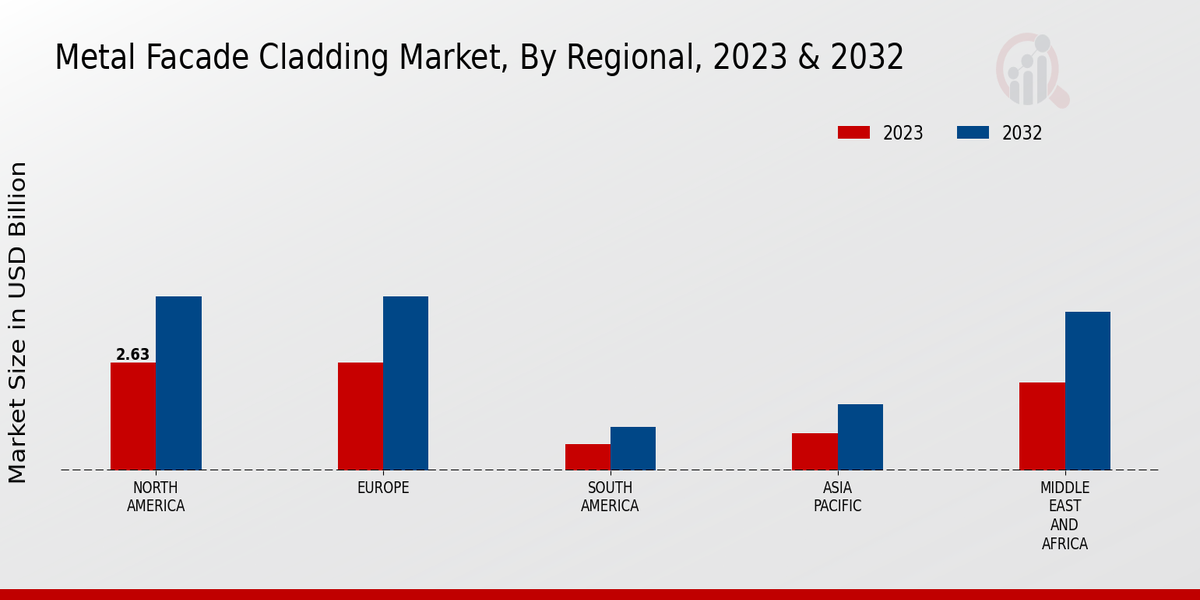Market Growth Projections
The Global Metal Facade Cladding Market Industry is poised for substantial growth, with projections indicating a market value of 10.1 USD Billion in 2024 and an anticipated increase to 19.0 USD Billion by 2035. This growth trajectory suggests a compound annual growth rate of 5.93% from 2025 to 2035. Such figures reflect the increasing adoption of metal cladding in various construction projects, driven by factors such as urbanization, sustainability, and technological advancements. The market's expansion is likely to be supported by ongoing investments in infrastructure and a growing preference for durable, aesthetically pleasing building materials.
Sustainable Building Practices
The Global Metal Facade Cladding Market Industry is increasingly influenced by the growing emphasis on sustainable building practices. As environmental regulations tighten, architects and builders are seeking materials that not only enhance aesthetic appeal but also contribute to energy efficiency. Metal cladding, known for its durability and recyclability, aligns well with these sustainability goals. For instance, aluminum and steel facades can significantly reduce energy consumption in buildings, thereby lowering operational costs. This trend is expected to drive the market, with projections indicating a market value of 10.1 USD Billion in 2024, reflecting a shift towards eco-friendly construction methods.
Regulatory Support for Energy Efficiency
Regulatory support for energy efficiency initiatives is a critical driver of the Global Metal Facade Cladding Market Industry. Governments worldwide are implementing stringent building codes and standards that mandate the use of energy-efficient materials in construction. Metal cladding systems, known for their thermal performance and insulation properties, are often favored in compliance with these regulations. This regulatory environment encourages builders to invest in metal facade solutions, thereby propelling market growth. As energy efficiency becomes a priority in building design, the demand for metal cladding is expected to rise, further solidifying its position in the construction sector.
Technological Advancements in Manufacturing
Technological advancements in manufacturing processes are reshaping the Global Metal Facade Cladding Market Industry. Innovations such as automated production lines and advanced coating techniques enhance the quality and performance of metal cladding products. These advancements not only improve durability but also expand design possibilities, allowing for customized solutions that meet specific architectural needs. As manufacturers adopt these technologies, they can offer more competitive pricing and superior products, which may attract a broader customer base. This evolution in manufacturing is expected to support a compound annual growth rate of 5.93% from 2025 to 2035, reflecting the industry's dynamic nature.
Urbanization and Infrastructure Development
Rapid urbanization and infrastructure development across the globe are pivotal drivers of the Global Metal Facade Cladding Market Industry. As populations migrate to urban areas, the demand for residential and commercial buildings surges. Metal cladding provides a modern, sleek appearance while offering resilience against harsh weather conditions. Countries like India and China are investing heavily in urban infrastructure, which is likely to boost the demand for metal facades. This trend is projected to contribute to a market growth trajectory that could see the industry reach 19.0 USD Billion by 2035, indicating a robust expansion fueled by urban development.
Aesthetic Versatility and Design Flexibility
The aesthetic versatility and design flexibility of metal facade cladding are significant factors driving the Global Metal Facade Cladding Market Industry. Architects and designers increasingly favor metal cladding due to its ability to complement various architectural styles, from contemporary to traditional. The availability of diverse finishes, colors, and textures allows for creative expression while ensuring structural integrity. This adaptability is particularly appealing in commercial projects where branding and visual impact are crucial. As a result, the market is witnessing a growing adoption of metal cladding solutions, which is likely to sustain its upward trajectory in the coming years.























Leave a Comment